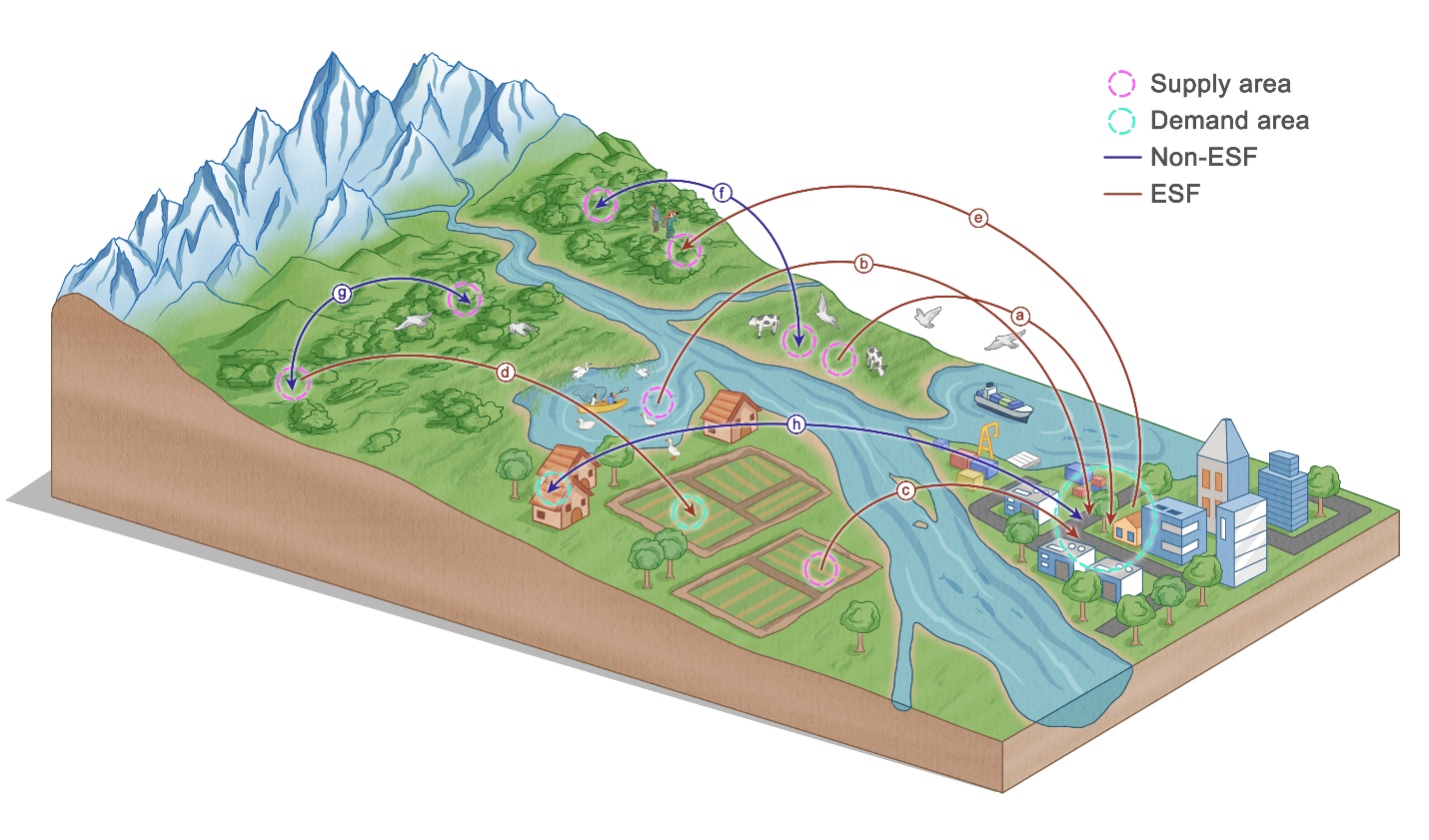Highlights
Managing Strategic Linkages among Natural and Human Systems can Enhance Ecosystem Services
Understanding and managing the dynamic fluxes of water, nutrients, and organisms across landscapes is critical for ensuring the sustainability of ecosystems and the human societies that depend on them. Landscapes are not collections of isolated parts but deeply interconnected networks where the flow of materials and species, from water in rivers to pollinators moving between fields, fundamentally shapes the benefits nature provides to people, known as ecosystem services (ESs). Strategic management of the linkages between natural and human systems can unlock their full potential to provide essential socioeconomic benefits and build resilience against environmental change.
Recently, a research team led by Prof. CAI Qinghua from the Institute of Hydrobiology (IHB) of the Chinese Academy of Sciences introduced a comprehensive framework that puts this concept of managing strategic linkages into practice. Grounded in meta-ecosystem theory, which studies how landscapes are interconnected by the flows of water, nutrients, and species, their framework provides the scientific tool needed to actually identify and manage these critical connections. By offering a systematic way to understand the networks that underpin ecosystem services, this research moves the overarching topic from a theoretical concept to an actionable planning strategy. The study was published in Frontiers in Ecology and the Environment.
"The novelty of our approach lies in its holistic view," said Dr. CHIU Ming-Chih, corresponding author of the study. "Traditional management often looks at a subset of connections. Our framework explicitly integrates both natural pathways and human-driven interactions across entire landscapes, providing a more predictive and effective basis for planning."
The study distinguishes between ecosystem-service flows (ESFs), which are transfers of benefits like clean water or crop pollination from supply areas to human demand areas, and non-ESFs, which are movements that occur within nature or between human settlements but indirectly influence service provision. Effectively managing both types of flows is key to sustaining vital services.
To illustrate the power of this approach, the researchers point to water management in China. Large-scale rural-to-urban migration creates shifting patterns of water demand. By integrating mobile-phone data to track population movements (a non-ESF) with hydrological models that simulate water flow (an ESF), managers can achieve real-time, predictive water allocation. This not only helps reduce conflicts but also improves the fairness of payment for ecosystem services programs by accounting for the water needs of migrant communities.
The perspective also outlines a forward-looking agenda to apply this framework by addressing key challenges. First, it advocates for unbiased analysis by integrating landscape dynamics into Life-Cycle Assessments to better reflect the true value of ecosystem services. Secondly, it calls for mechanism investigation through interdisciplinary research to uncover the precise mechanisms behind ecosystem service flows. Thirdly, it emphasizes strategic planning and transboundary coordination, highlighting the need for collaborative governance that crosses administrative borders to manage landscapes as cohesive functional units.
"This vision is about harmonizing the relationship between ecosystems and societies," said Dr. WEN Zihao, first author of the study. "By deriving economic benefits from sustainable practices that safeguard landscape resilience, we can foster a future where both ecological integrity and human well-being thrive concurrently."
This integrated research paradigm breaks through the limitations of traditional, siloed management approaches. It provides an innovative theoretical perspective and practical methodological tools for policymakers and land managers aiming to navigate the complex interplay of natural and human systems in our rapidly changing world.

An example of the intricate tapestry of biotic and abiotic interactions involving both ecosystem-service flows (ESFs) and non-ESFs within a stylized landscape. (Image by IHB)
(Editor: MA Yun)